Offre de stage de Master 2 Recherche en 2025
Développement d’un protocole pour analyser les ions ammonium (NH4+) et nitrate (NO3–) dans les échantillons d’astéroïdes rapportés sur Terre par les missions spatiales
Development of an experimental protocol to extracted and analyse ammonium (NH4+) and nitrate (NO3–) ions in asteroidal samples returned on Earth by space missions (English version below)
Laboratoire d’accueil : Institut de Planétologie et d’Astrophysique de Grenoble (IPAG), 122 rue de la piscine, 38400 St Martin d’Hères
Durée du stage : 5-6 mois en 2025
Encadrant principal : Olivier Poch (IPAG)
Co-encadrants : Lydie Bonal (IPAG) et Joël Savarino (Institut des Géosciences de l’Environnement, IGE, 54 rue Molière, 38400 St Martin d’Hères)
Niveau de formation et pré-requis : Le stage s’adresse à un(e) étudiant(e) de niveau Master 2 spécialisé(e) en chimie environnementale ou géochimie, sciences de l’environnement, cosmochimie. L’expérience d’un travail autonome et rigoureux en laboratoire de chimie analytique sont des qualités indispensables du (de la) candidat(e).
Mots-clés : chimie de l’environnement, cosmochimie, isotopie, météorites
Contexte et objectifs du stage :
L’incorporation et l’évolution de l’azote depuis les environnements pré-stellaires jusqu’à la formation du système solaire, sa répartition au sein des différents corps du système solaire, et notamment l’origine de l’azote terrestre, sont très mal compris (Pontoppidan et al., 2014). Comment l’azote a-t-il été apporté, par les comètes et/ou astéroïdes, sous quelle forme ? Des découvertes récentes suggèrent que ces objets auraient pu y délivrer une quantité significative d’azote sous forme d’ammonium (NH4+, présent dans des sels, phyllosilicates, ou grains organiques) (Poch et al., 2020). Or, très peu d’études ont recherché NH4+ dans les chondrites carbonées, les météorites primitives les plus riches en éléments volatils. Pour améliorer notre compréhension de l’origine et de l’évolution de l’azote lors de la formation du système solaire, il est donc important de chercher à quantifier et à déterminer l’origine de NH4+ contenu dans ces météorites.
Entre 2021 et 2024, un travail de thèse, réalisé grâce à une collaboration transdisciplinaire entre l’IPAG (équipe de Planétologie) et l’IGE (équipe Carottes, Climat, Chimie) à Grenoble, a permis de quantifier NH4+ et de caractériser son rapport isotopique 14N/15N dans différentes chondrites carbonées de type CI, CR, CM, C2-ung, obtenant plusieurs résultats prometteurs. Il a par exemple été montré que plus d’un quart de l’azote dans la météorite d’Orgueil est sous forme de NH4+ dont le rapport 14N/15N confirme son origine extra-terrestre et suggère différents scénarios de formation, en lien ou non avec la matière organique où se trouve le reste de l’azote (Laize-Générat et al., 2024).
En ce moment, un enjeu majeur est l’analyse des échantillons retournés des astéroïdes Ryugu et Bennu, respectivement par les missions spatiales Hayabusa 2 et OSIRIS-Rex en 2020 et 2023. La présence de NH4+ et de nitrate (NO3–) a été mise en évidence dans les grains de Ryugu (Yoshimura et al., 2023), mais leur composition isotopique est inconnue, et ces ions n’ont pas encore été recherchés dans les grains de Bennu. L’objectif de ce stage sera de développer un protocole permettant la quantification et l’analyse isotopique des ions NH4+ et NO3– dans ces échantillons astéroïdaux. Le protocole expérimental mis en place lors de la thèse précédente nécessite 150 mg d’échantillon brut pour effectuer ces analyses, ce qui est une quantité trop importante par rapport aux fractions allouables de celles rapportées par Hayabusa 2 (5 g de Ryugu) et OSIRIS-Rex (120 g de Bennu). Le travail de stage visera donc à adapter le protocole analytique existant pour permettre l’analyse d’échantillons ayant des masses 10 à 100 fois plus faibles, de quelques milligrammes à quelques dizaines de milligrammes. Cela nécessitera d’effectuer des tests de contamination, calibration, et des analyses d’échantillons de chondrites carbonées de composition déjà connue. Après les étapes d’extraction à l’IPAG, par broyage, cycle de gel-dégel et/ou ultrasonication à froid pour limiter les transformations chimiques, et en un minimum d’étapes pour éviter les contaminations, NH4+ et NO3– seront identifiés et quantifiés par chromatographie cationique et anionique puis leur rapport isotopique sera mesuré à l’aide d’un spectromètre de masse à rapport isotopique à l’IGE.
Références :
- Pontoppidan et al., 2014. Volatiles in Protoplanetary Disks, in: Protostars and Planets VI. University of Arizona Press. https://doi.org/10.2458/azu_uapress_9780816531240-ch016
- Poch et al., 2020. Ammonium salts are a reservoir of nitrogen on a cometary nucleus and possibly on some asteroids. Science 367. https://doi.org/10.1126/science.aaw7462
- Laize-Générat et al., 2024. Nitrogen in the Orgueil meteorite: Abundant ammonium among other reservoirs of variable isotopic compositions. Geochimica et Cosmochimica Acta. https://doi.org/10.1016/j.gca.2024.10.001
- Yoshimura et al., 2023. Chemical evolution of primordial salts and organic sulfur molecules in the asteroid 162173 Ryugu. Nat Commun 14, 5284. https://doi.org/10.1038/s41467-023-40871-0
Pour candidater, adresser par email à Olivier Poch (olivier.poch@univ-grenoble-alpes.fr), Lydie Bonal (lydie.bonal@univ-grenoble-alpes.fr) et Joël Savarino (joel.savarino@cnrs.fr) les documents suivants :
- une lettre de motivation qui devra inclure un résumé concis des travaux de recherche effectués et de l’expérience en laboratoire (thématiques, méthodes employées, principaux résultats),
- un CV détaillé,
- un relevé de notes du M1 (voire du M2 si disponible).
English version:
Development of an experimental protocol to extract and analyse ammonium (NH4+) and nitrate (NO3–) ions in asteroidal samples returned on Earth by space missions
Laboratory: Institut de Planétologie et d’Astrophysique de Grenoble (IPAG), 122 rue de la piscine, 38400 St Martin d’Hères
Duration: 5-6 months in 2025
Supervisor: Olivier Poch (IPAG)
Co-supervisors: Lydie Bonal (IPAG) et Joël Savarino (Institut des Géosciences de l’Environnement, IGE, 54 rue Molière, 38400 St Martin d’Hères)
Prerequisites: The trainee must have a M2 level with skills in environmental chemistry, or geosciences, cosmochemistry. It is required to have a work experience in an experimental laboratory, especially in analytical chemistry.
Keywords: environmental chemistry, cosmochemistry, isotopy, meteorites
Context and objectives:
The incorporation and evolution of nitrogen from pre-stellar environments to the formation of the solar system, its distribution within the different bodies of the solar system, and in particular the origin of terrestrial nitrogen, are very poorly understood (Pontoppidan et al., 2014). In which forms is the nitrogen in comets and asteroids, which are the relics of planetesimals? Recent discoveries suggest that these objects may have delivered a significant quantity of nitrogen in the form of ammonium (NH4+, present in salts, phyllosilicates or organic grains) (Poch et al., 2020). However, very few studies have looked for NH4+ in carbonaceous chondrites, the primitive meteorites richest in volatile elements. To improve our understanding of the origin and evolution of nitrogen during the formation of the solar system, it is therefore important to quantify and determine the origin of the NH4+ contained in these meteorites.
Between 2021 and 2024, a PhD project, carried out as part of a transdisciplinary collaboration between the IPAG (Planetology team) and the IGE (Ice core & Climate team) in Grenoble, has quantified NH4+ and characterised its 14N/15N isotopic ratio in various carbonaceous chondrites of the CI, CR, CM and C2-ung groups, obtaining a number of promising results. For example, it has been shown that more than a quarter of the nitrogen in the Orgueil meteorite is in the form of NH4+, whose 14N/15N ratio confirms its extraterrestrial origin and suggests different formation scenarios, with or without a link to the organic matter in which the rest of the nitrogen is found (Laize-Générat et al., 2024).
A major challenge is the analysis of samples returned from the asteroids Ryugu and Bennu, respectively by the Hayabusa 2 and OSIRIS-Rex space missions in 2020 and 2023. The presence of NH4+ and nitrate (NO3–) has been reported in Ryugu grains (Yoshimura et al., 2023), but their isotopic composition is unknown, and these ions have not yet been searched in Bennu grains. The aim of this internship will be to develop a protocol for the quantification and isotopic analysis of NH4+ and NO3– ions in these asteroidal samples. The experimental protocol set up during the previous thesis requires 150 mg of raw sample to carry out these analyses, which is too large compared with the fractions of those samples that can be allocated. Therefore, the aim of this internship will be to adapt the existing analytical protocol to enable the analysis of samples with masses 10 to 100 times smaller, from a few milligrams to a few tens of milligrams. This will require contamination tests, calibration, and analyses of samples of carbonaceous chondrites of known composition. After the NH4+ and NO3– extraction steps at IPAG, by grinding, freeze-thaw cycles and/or cold ultrasonication to limit chemical transformations, and in a minimum of steps to avoid contamination, NH4+ and NO3– will be identified and quantified by cation and anion chromatography, then their isotope ratio will be measured using an isotope ratio mass spectrometer at IGE.
References:
- Pontoppidan et al., 2014. Volatiles in Protoplanetary Disks, in: Protostars and Planets VI. University of Arizona Press. https://doi.org/10.2458/azu_uapress_9780816531240-ch016
- Poch et al., 2020. Ammonium salts are a reservoir of nitrogen on a cometary nucleus and possibly on some asteroids. Science 367. https://doi.org/10.1126/science.aaw7462
- Laize-Générat et al., 2024. Nitrogen in the Orgueil meteorite: Abundant ammonium among other reservoirs of variable isotopic compositions. Geochimica et Cosmochimica Acta. https://doi.org/10.1016/j.gca.2024.10.001
- Yoshimura et al., 2023. Chemical evolution of primordial salts and organic sulfur molecules in the asteroid 162173 Ryugu. Nat Commun 14, 5284. https://doi.org/10.1038/s41467-023-40871-0
Applicants should send the following documents by email to Olivier Poch (olivier.poch@univ-grenoble-alpes.fr), Lydie Bonal (lydie.bonal@univ-grenoble-alpes.fr) and Joël Savarino (joel.savarino@cnrs.fr):
– A letter of motivation summarizing the research works done and the experience of laboratory works (subjects, methods, principal results). The letter should also state the suitability of the candidate’s profile for the project and the reasons for his (her) interest in the subject.
– A detailed CV.
– A transcript of the M1 grades (and M2 if available).
IGE: http://www.ige-grenoble.fr/
IPAG: https://ipag.osug.fr/
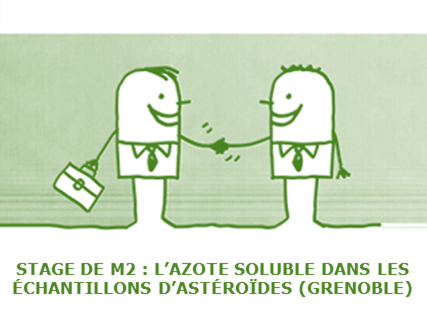
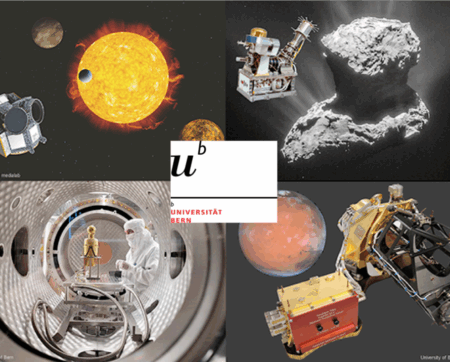
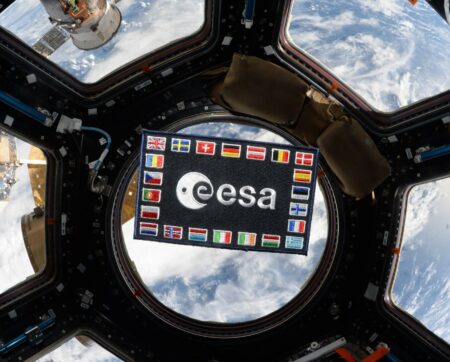
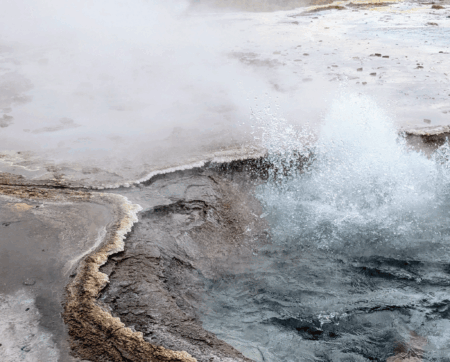
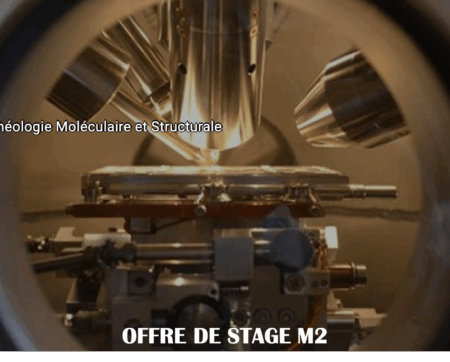
Aucun commentaire sur l'article Stage de M2 : Analyse de l’azote soluble dans les échantillons d’astéroïdes rapportés sur Terre